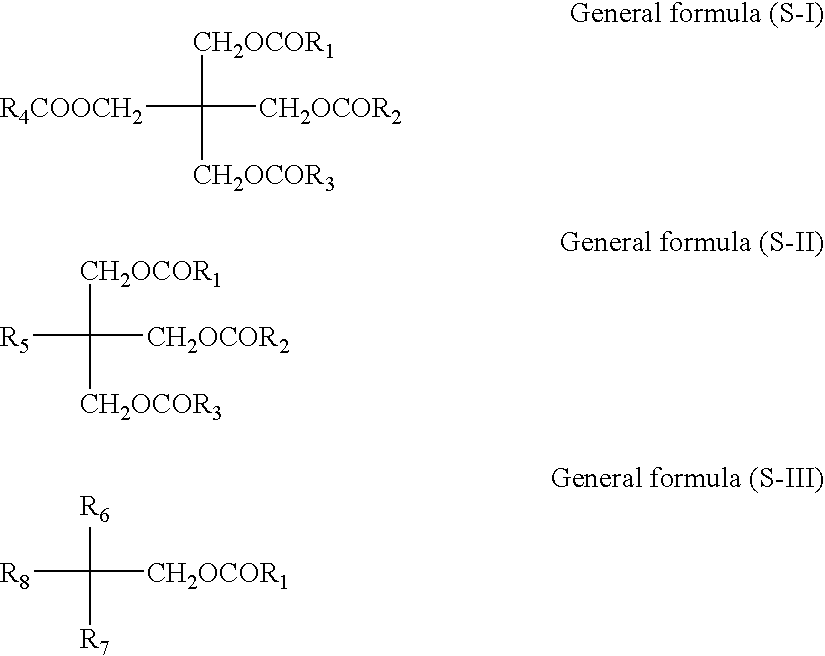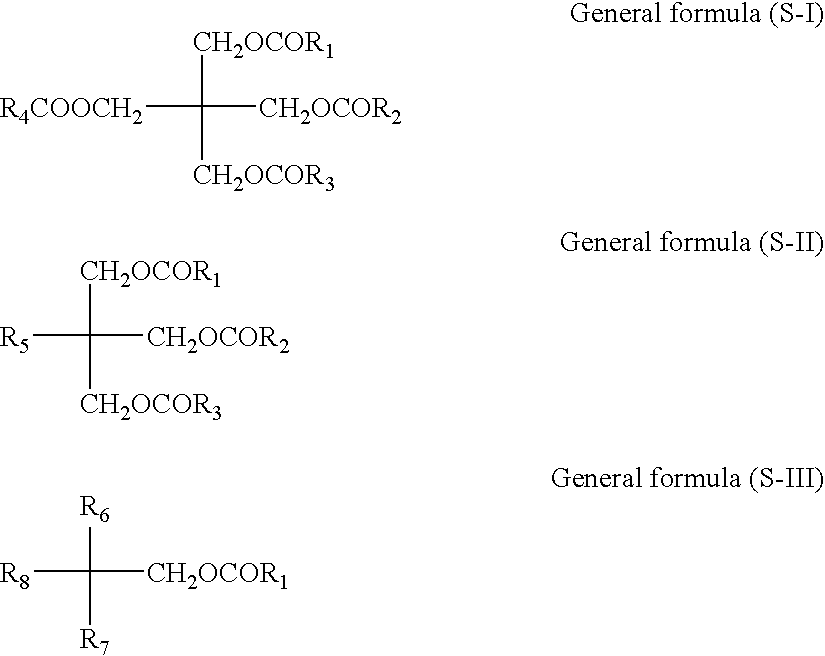Photothermographic material
a technology of photothermographic materials and materials, applied in the field of photothermographic materials, can solve the problems of unsatisfactory image output systems for medical use, high image quality of excellent sharpness, undesired effects on output images, etc., and achieve excellent transportability and photographic performance. excellent
- Summary
- Abstract
- Description
- Claims
- Application Information
AI Technical Summary
Benefits of technology
Problems solved by technology
Method used
Image
Examples
example 1
[0552] (Preparation of PET Support)
[0553] 1) Film Preparation
[0554] PET having an intrinsic viscosity of 0.66 (measured in phenol / tetrachloroethane=6 / 4 (weight ratio) at 25.degree. C.) was obtained by using terephthalic acid and ethylene glycol according to an ordinary method. The resulting PET was pelletized and dried at 130.degree. C. for 4 hours, and after melting, it was then extruded from a T-die at 300.degree. C. to produce a non-stretched film having such a thickness that provided a thickness of 175 .mu.m after thermal fixation.
[0555] The film was stretched in the machine direction by 3.3 times by using rolls having different peripheral velocities, and then stretched in the transversal direction by 4.5 times by using a tenter. The temperatures upon stretching were 110.degree. C. and 130.degree. C., respectively. Thereafter, the film was thermally fixed at 240.degree. C. for 20 seconds and then relaxed at the same temperature by 4% in the transversal direction. The parts chack...
example 2
[0694] In the sample 2A, the slipping agent was replaced by 1 / 2 weight with the slipping agent S-22 of the present invention and further replacing the fluoro surface active agents F-1 and F-2 as shown in Table 4, and identical evaluation was conducted by the heat development machine shown in FIG. 1. The result is shown in Table 4.
13 TABLE 4 Kind of Surface active agent Emulsion Back Number of Surface Surface Sheets of Protection Protection Failed Sample No. Layer Layer Transportation Remark A F-1, F-2 F-1, F-2 5 Invention B FF-1 FF-1 3 Invention C FF-2 FF-2 3 Invention D FF-3 FF-3 4 Invention E F-17 F-17 0 Invention F F-26 F-26 0 Invention G F-29 F-29 0 Invention H F-50 F-50 0 Invention I FS-17 FS-17 1 Invention J FN-1 FN-1 2 Invention
[0695] FF-1 C.sub.8F.sub.17SO.sub.2N(C.sub.3H.sub.7)CH.sub.2COOK
[0696] FF-2 C.sub.8F.sub.17CH.sub.2CH.sub.2SCH.sub.2CH.sub.2SO.sub.3Li 93
[0697] By the use of the fluoro surface active agent used preferably in the present invention, the number of sheets...
example 3
[0698] 1) Preparation of Second Slipping Agent (Liquid at Normal Temperature) Emulsion
[0699] The second slipping agent (liquid at ordinary temperature) emulsion according to the present invention was dispersed by emulsification by the same method as in Example 1 except for replacing the comparative compounds prepared as the slipping agent emulsion (comparative compounds) therein with the slipping agent shown in Table 5 by the an identical weight. The average grain size was within a range from 0.18 .mu.m to 0.26 .mu.m.
[0700] 2) Preparation of Second Slipping Agent (Melting Point 40 to 80.degree. C.) Emulsion (Compound of the Present Invention)
[0701] The slipping agent (liquid at a ordinary temperature) emulsion according to the present invention was dispersed by emulsification by the same method as in Example 1 except for replacing the comparative compounds prepared as the slipping agent emulsion (comparative compounds) therein with the slipping agent shown in Table 5 by an identical...
PUM
| Property | Measurement | Unit |
|---|---|---|
| melting point | aaaaa | aaaaa |
| temperature | aaaaa | aaaaa |
| temperature | aaaaa | aaaaa |
Abstract
Description
Claims
Application Information
 Login to View More
Login to View More - R&D
- Intellectual Property
- Life Sciences
- Materials
- Tech Scout
- Unparalleled Data Quality
- Higher Quality Content
- 60% Fewer Hallucinations
Browse by: Latest US Patents, China's latest patents, Technical Efficacy Thesaurus, Application Domain, Technology Topic, Popular Technical Reports.
© 2025 PatSnap. All rights reserved.Legal|Privacy policy|Modern Slavery Act Transparency Statement|Sitemap|About US| Contact US: help@patsnap.com



